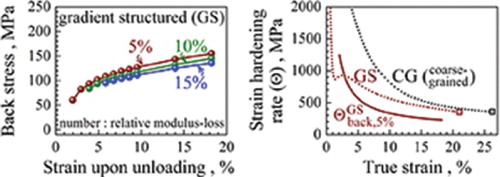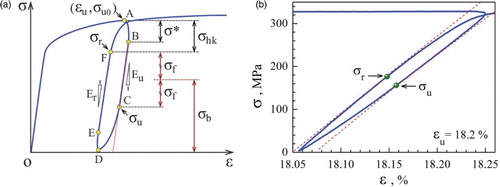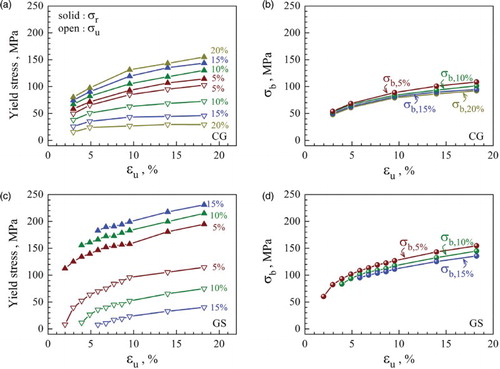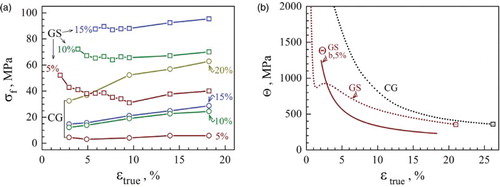Figures & data

Figure 1. (Colour online) (a) Tensile stress–strain curves in the GS and CG IF steel samples. (b) Strain hardening rate (Θ = dσ/d) vs. strain. (c) The unloading and reloading test hysteresis loops measured at varying tensile strains for both CG and GS samples.

Figure 2. (Colour online) (a) The schematic of the unloading–reloading loop for defining the unload yielding σu, reload yielding σr, back stress σb and frictional stress σf, effective unloading Young's modulus of Eu, effective reloading Young's modulus of Er. (b) A measured hysteresis loop from the GS IF steel sample with σu and σr defined.

Figure 3. (Colour online) Evolution of (a) unloading yield stress σu and reloading yield stress σr and (b) back stress with increasing unloading strain u for CG IF steel, and the evolution of (c) unloading/reloading yield stresses and (d) back stress with increasing
u for GS IF steel. σb,5% represents the back stress calculated using 5% slope reduction from the effective Young's modulus.

Figure 4. (Colour online) The frictional stress σf vs. tensile strain true for the GS and CG IF steel samples calculated according to Equation (4). (b) The distinct back stress hardening in GS IF steel.
denotes the back stress hardening rate calculated using 5% slope reduction from the effective Young's modulus.

